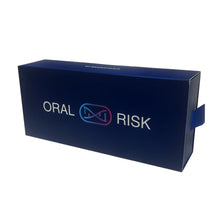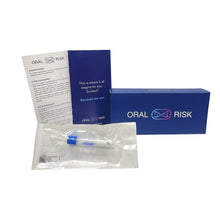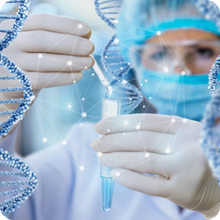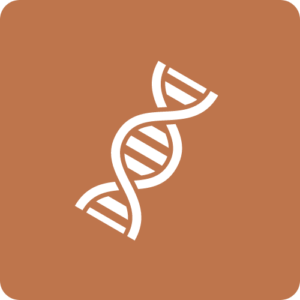OralRisk™ Genetic Testing
Empowering dental practices to expand preventative care with genetic testing.
OralRisk™ is the first genetic test of its kind that analyzes your human DNA to identify your predisposition to dental caries and periodontal disease.
Unlike bacterial testing, which identifies the current pathogenic load and requires periodic repetition, the OralRisk test is a once-in-a-lifetime genetic DNA test that identifies 25 markers associated with dental caries and 35 markers linked to periodontal disease.
Knowing can create better outcomes: Genetic testing provides valuable insights into a patient’s predisposition to dental caries and periodontal disease. This information empowers dental professionals to develop personalized treatment plans tailored to the patient’s unique risk factors, enabling proactive prevention of these conditions.
Curion is the ONLY authorized and exclusive distributor of Oral Risk by AI Genetics in Canada. This product is backed by the manufacturer's warranty.


OralRisk™
The genetic OralRisk panel tests for two of the most common conditions: dental caries and periodontal disease. With AI Genetic's comprehensive predictive test, patients can discover if they are at high risk for these conditions, and work with their dentist and/or hygienist to create a tailored patient-centric preventative care plan.
Use Billing Code: 04101 / Microbiology Sample
The test involves the following:
- Simple buccal (cheek) swab
- Online patient and professional portal
- Clear results with a range from Low to High risk
1. What does the test do?
This test assesses an individual’s risk of developing two of the most common conditions that not only affect oral health, but can also be costly and lead to more serious health problems:
- Dental Caries
- Periodontal Disease
2. What is the process?
- Interpretation: Results from analysis are automatically interpreted using the polygenic risk score calculation and plotted graphically.
- Results: Patient and dentist are notified when the results are ready and can be accessed in the portal for review.
3. What are the benefits to the patients?
- Genetic results can offer additional insights into a patient’s immediate and long-term oral health needs.
- Allows for dialogue between patient and dental care provider in a patient centered approach.
- Can help to shape a preventative care plan that may include additional professional cleanings, products and/or education and counseling.
4. What are the benefits to the practice?
- Practice revenue growth: additional education, professional cleanings and/or cleaning products for the patient.
- Better long-term understanding of the patient's immediate and long-term oral health needs.
It's quick and easy to use:
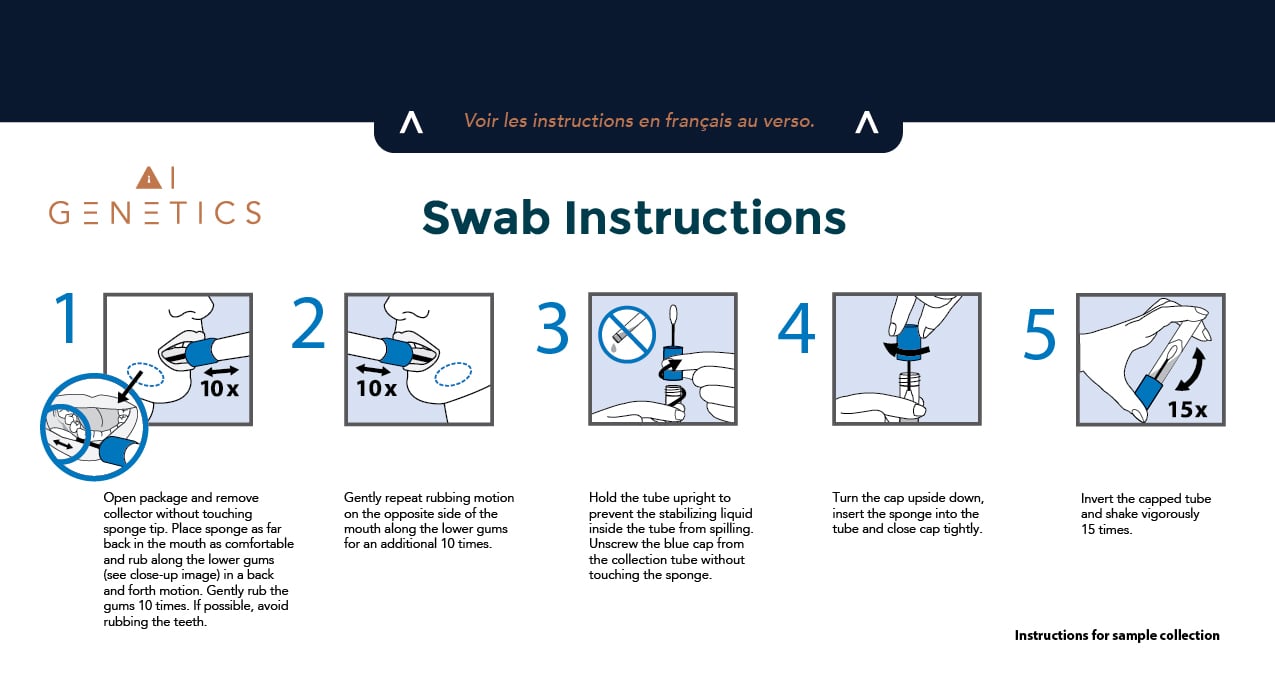
Why Choose AI Genetic Testing?
Best in-class genetic testing in Canada: Using advanced technology in genomics and a team of geneticists, scientists, physicians; and a fully equipped state-of-the-art laboratory in Canada.
The panels we develop are novel, and do not currently exist in the market. |
Everything is done in-house in our lab in Canada so we can avoid unnecessary costs by cutting middlemen. |
using advanced technology in genomics and a team of geneticists, scientists, physicians; and a fully equipped state-of-the-art laboratory in Canada. |
Articles and Reports:
- High and Low PRS Report Template
- Manuscript Dental Journal Version
- A Ground-breaking Risk Assessment Strategy
Worksheets and Planners (Courtesy of RDHU Inc.):
- OralRisk Patient Talking Points
- OralRisk Patient Types and Compelling Headlines
Quick Guide and Patient Brochure:
- OralRisk In-Office Quick Guide
Watch Webinar: Integrating Genetic Risk Assessment for General Dentistry
How to take the OralRisk test:
How to use Ai Genetics Portal
Frequently Asked Questions
This test assesses an individual’s risk based on their genetic biomarkers for developing two of the most common conditions that not only affect oral health, but can also be costly and lead to more serious health problems:
- Dental Caries
- Periodontal Disease
- The test is designed to take less than 5 minutes of chair time with an easy-to-use cheek swab that is taken and placed into a pre-paid Purolator envelope.
- The test is sent to and analyzed by Mount Sinai Hospital in Toronto where the patient’s genetic material is analyzed and interpreted using a polygenetic risk score.
- Getting your results: Patient and dentist are notified by email when the results are ready and can be accessed in the portal for review.
- The result will return as a graph that places the patient at low, medium or high risk of developing one or both diseases compared to a standard population.
- Genetic results can offer additional insights into a patient’s immediate and long-term oral health needs.
- Allows for dialogue between patient and dental care provider in a patient centered approach.
- Can help to shape a preventative care plan that may include additional professional cleanings, products and/or education and counseling.
- Practice revenue growth: additional education, professional cleanings, select adjunctive therapies, and/or cleaning products for the patient.
- Test results provide objective data to support treatment and home care recommendations.
For Moderate to High risk caries:
- Fluoride varnish at recare visits.
- Potential for shorter bitewing radiograph intervals to evaluate for interdental decay.
- PerioProtect trays
- Oral Probiotics
- Preventive sealants
- Power Toothbrush
- Remineralizing toothpastes
- Bacterial testing to monitor pathogenic load
For Moderate to High Risk for Periodontal Disease
- Perio Protect Trays
- Laser therapy
- Oral Probiotics
- 3-month hygiene frequency
- Therapeutic rinses
- Bacterial Testing to monitor pathogenic Load
Oral Risk is very different from a bacterial test. With typical bacterial testing, the salivary test is analyzing saliva to identify the presence of bacteria. They look for bacterial DNA to identify their type and load. These tests are highly valuable but are not the same as a human genetic test like Oral RiskTM. They are not analyzing human DNA and therefore cannot identify genetic risk.
For this reason, a bacterial test can be taken many times, as the pathogenic load fluctuates. A genetic test on the other hand, is taken once is a lifetime as genetic predisposition is inherent and unchanging. You could take the test at 1 month old and again at 99 years old and will have the same result.
The great part of this test, and the specific diseases that were selected is that these diseases can be prevented. Action can be taken to prevent these diseases from manifesting. If the disease process has begun, this test can help clinicians and patients know how significant the action taken needs to be.
In a sense, we can rewrite our patient’s history!














































